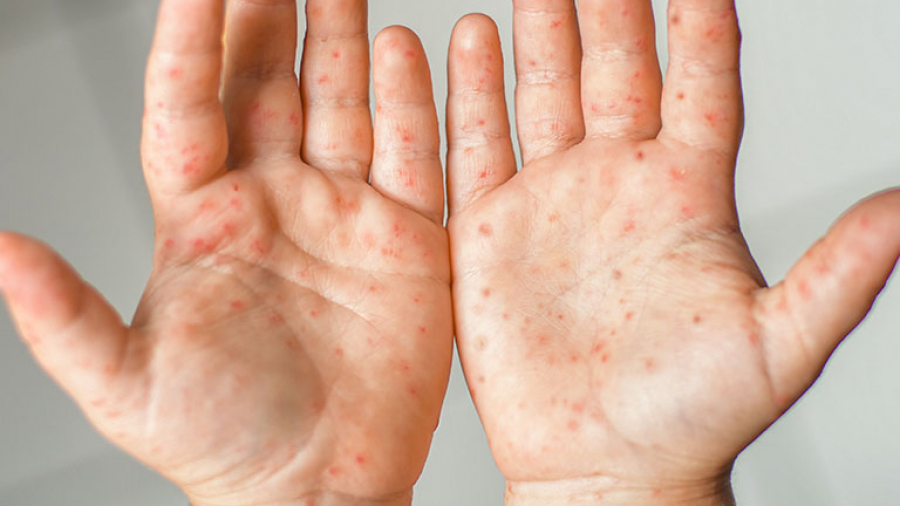As of May 2022, the number of hand, foot and mouth disease (HFMD) cases in Malaysia have increased 28 times compared to the same period in 2021! This has caused worry among parents, especially those with young children.
According to reports, a majority of outbreak locations involved kindergartens, nurseries, pre-schools, childcare centres and even private homes.
As parents or any member of society, it is important that we play our roles to protect children from HFMD by understanding this common childhood illness and taking steps to prevent the spread of HFMD. Here are the things you need to know about the disease.
What is HFMD?
HFMD is a contagious disease that is caused by viruses. Although adults can also be infected, it usually affects young children under 5 years old. HFMD is generally mild, but can be fatal if complications occur!
How is it spread?
HFMD is spread from person to person by:
- Direct contact with nasal discharge, saliva, faeces
- Fluid from the rash of an infected person
- Breathing in air droplets of the infected person (less than 3 feet)
Signs & symptoms
- Fever
- Sore throat
- Headache
- Poor appetite
- Lethargy
- Ulcers in the throat, mouth and tongue
- Rash with vesicles on hands, feet and diaper area
Management & treatment
- Drink plenty of fluids (including warm fluids like chicken broth or apple juice)
- Consume a soft diet (e.g., porridge, pureed fruit) for mouth ulcer problems
- Get plenty of rest at home
There is no vaccine to prevent HFMD!
Besides teaching your kids good hygiene practices, it is also important to boost the immune system with diet & nutrition. As parents, we want the best for our kids. Therefore, supplementing their diet with immune-boosting nutrients is always a great idea which includes:
- Vitamin A, C, D, E and minerals (zinc, selenium, iron, calcium and many more)
Children require vitamins and minerals for proper growth, development, and health. Children who do not obtain enough vitamins and minerals may experience growth and development issues.
While our everyday diet can provide different vitamins in varied levels, a well-balanced diet rich in diverse food categories – protein, grains, vegetables, fruits and dairy, is essential for ensuring optimal vitamin consumption. If you are worried that your kids are not getting enough, you can opt for supplements to ensure that they meet their nutritional requirements.
- Probiotic
Probiotics are used to restore the body’s healthy bacteria. They may be beneficial for illnesses such as irritable bowel syndrome, eczema, and the common cold.
Certain bacteria are required for children’s health. Bacteria aid in digestion, nutrition absorption, and the fight against pathogens that cause illness. Infection and sickness can arise when the balance of beneficial to bad germs in the microbiome is skewed.
- Colostrum
Colostrum is the first secretion by mothers during the initial period of post-delivery before it converts into milk. It’s one of the few natural foods that contain Immune Factors (IF) and Growth Factors (GF). IF are proteins that support the immune system while GF help to heal and regenerate the cells.
By providing your kids colostrum, such as the ELG6 Colostrum that is collected during the first milking upon the birth of the calf, can help to strengthen their immune system, hinder development of illnesses, aid cell regeneration and tissue repair for faster recovery, and provide anti-inflammatory effects.
- Spirulina
Spirulina is considered a superfood that can fill out nutritional gaps. It can boost health, build a better immune system as well as improve endurance. If you are looking for a supplement that ticks all boxes for all nutritional needs of a child, look no further than this supplement!
Elken Spirulina is a nutritional superfood packed with 60 types of highly concentrated nutrients such as protein (amino acids), vitamins, minerals, essential fatty acids, carbohydrates, chlorophyll, beta-carotene, phycocyanin and xanthophyll that are readily digested and assimilated. It is suitable for your whole family so everyone can enjoy good health!
References:
- Centers for Disease Control and Prevention. (n.d.). Hand, foot, and mouth disease. Centers for Disease Control and Prevention. Retrieved May 31, 2022, from https://wwwnc.cdc.gov/travel/diseases/hand-foot-and-mouth-disease
- Hand-foot-mouth disease. (HFMD): Symptoms, Treatment and Prevention. (n.d.). Retrieved May 31, 2022, from https://www.nationwidechildrens.org/conditions/hand-foot-mouth-disease
- Hao, Q., Dong, B. R., & Wu, T. (2015). Probiotics for preventing acute upper respiratory tract infections. Cochrane Database of Systematic Reviews. https://doi.org/10.1002/14651858.cd006895.pub3
- Matondo, F. K., Takaisi, K., Nkuadiolandu, A. B., Kazadi Lukusa, A., & Aloni, M. N. (2016). Spirulina Supplements Improved the Nutritional Status of Undernourished Children Quickly and Significantly: Experience from Kisantu, the Democratic Republic of the Congo. International journal of pediatrics, 2016, 1296414. https://doi.org/10.1155/2016/1296414
Additional references:
- Admin, N. (2021, June 11). The Importance of Vitamins for Kids. The Nourished Child. Retrieved June 14, 2022, from https://thenourishedchild.com/the-importance-of-vitamins-for-kids/
- McDermott, A. (2019, July 3). Are Probiotics Healthy for Children? Healthline. Retrieved June 14, 2022, from https://www.healthline.com/health/parenting/probiotics-for-children

